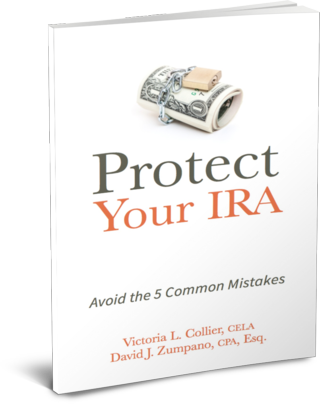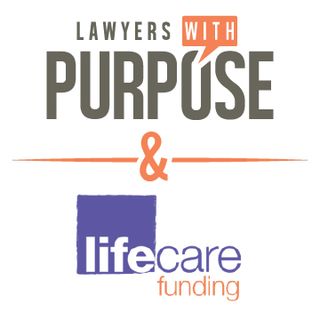Many lawyers are perplexed when utilizing grantor trusts in estate, asset protection and benefit planning. It is easy to become confused when comparing grantor trusts with pure grantor trusts. Let's review these issues systematically.
 The Internal Revenue Code provides that if a trust triggers any of the provisions identified in Sections 671 through 679 of the Internal Revenue Code, all income from that trust will be taxed to the grantor regardless of who receives it. The most typical provisions in a trust that trigger grantor trust status are if the grantor retains an interest in the income or principal from the trust, the power to control who gets the income or principal, the power to revoke the trust, or the right to borrow money from the trust without adequate interest or security. Grantor trust status also occurs if the grantor has the right to pay premiums on life insurance on the grantor. Interestingly, triggering a "grantor trust" status does not necessarily trigger the principal of the trust to be included in the estate of the grantor at death. It's merely an income tax impact.
The Internal Revenue Code provides that if a trust triggers any of the provisions identified in Sections 671 through 679 of the Internal Revenue Code, all income from that trust will be taxed to the grantor regardless of who receives it. The most typical provisions in a trust that trigger grantor trust status are if the grantor retains an interest in the income or principal from the trust, the power to control who gets the income or principal, the power to revoke the trust, or the right to borrow money from the trust without adequate interest or security. Grantor trust status also occurs if the grantor has the right to pay premiums on life insurance on the grantor. Interestingly, triggering a "grantor trust" status does not necessarily trigger the principal of the trust to be included in the estate of the grantor at death. It's merely an income tax impact.
To determine if assets in a trust are included in the grantor's estate at death for estate tax purposes, one must look to the provisions of Sections 2035 through 2042 of the Internal Revenue Code to determine whether estate tax inclusions are triggered. Inclusions are typically caused by provisions that allow the grantor the right to possess or enjoy the property of the trust or receive the income or principal of the property from the trust, or to be able to designate who will.
Other provisions include maintaining a revisionary interest to the grantor in excess of 5 percent, or permitting the grantor to have any other interest in the trust at death. While some of the grantor trust provisions can also trigger estate tax inclusion, one can often craft a trust to ensure that the principal of the trust is not included in the estate of the grantor, but the income tax is. This strategy of “Grantor Trust” status allows additional gifts by the grantors that are not subject to the annual gift tax exclusion. Restated, the additional income tax being paid by the grantor is money that would otherwise have been paid by the trust to beneficiaries who received the proceeds. Having the income taxes come out of the grantor's assets, and not the trust principal, permits the additional accumulation of funds for the beneficiaries without any gift tax consequence for the grantor. Most typically, irrevocable life insurance trusts are grantor trusts for income tax purposes, but are not included in the estate of the grantor at death.
So then, what is a Pure Grantor Trust? That is a term of art to describe a trust that taxes the grantor on the income (grantor trust) and ensures that the assets of the trust are included in the estate of the grantor. A Pure Grantor Trust is both a grantor trust for income tax purposes and is included in the estate of the grantor at death. Fifteen years ago, many would consider such a trust as malpractice, but since the change in the estate tax laws in 2001, this has become the preferred plan of 99.8 percent of Americans.
Why?
Because they are not subject to federal estate taxes, and including the assets of the grantor in their estate provides for a "step up" in tax basis after death. This ensures that their heirs inherit the property at the fair market value determined at the grantor's date of death, rather than carry-over tax basis, in which the heirs inherit the property at the cost the grantor paid for it. Unfortunately, many lawyers are still stuck in the pre‑2001 mindset and restrict clients to plans based on the estate tax avoidance rules. The key now is understanding when to use each type of trust.
Typically individuals with more than $5,430,000 or couples with more than $10,860,000 are concerned with the estate tax and would be more likely to use the traditional irrevocable trust that avoids estate tax inclusion in the grantor's estate at death. Individuals with less than $5,430,000 are better served using the Irrevocable Pure Grantor Trust™ (iPug®) to achieve asset protection from creditors, predators, and long-term care costs, and to ensure they remain eligible for needs-based benefits such as Medicaid.
Distinguishing the different trusts and their uses comes down to identifying the need of the individual client. Obviously, revocable trusts are pure grantor trusts and have all income taxed to the grantor, and all of the principal is included in the estate of the grantor. Revocable trusts are traditionally used to provide for the proper distribution and management of assets during the life or after the death of the grantor. Alternatively, if an individual has a taxable estate under federal or state law, then a non‑grantor trust is typically the trust of choice to ensure that the principal of the trust is not included in the grantor's estate. Whether the income is taxed to the grantor or not is also client goal specific. Notwithstanding, in most cases practitioners will choose to make irrevocable trusts grantor trusts to take advantage of the additional reduction in the grantor's estate and to benefit the beneficiaries by having income tax paid by the grantor.
Individuals who are not subject to estate tax and who are concerned about asset protection are better served with the iPug Trust, which allows them to be the trustee and maintain full control of the trust assets, and even allows them to retain benefits from them to the extent they are willing to risk them. For example, an income-only iPug Trust will allow the grantor rights to all of the income, which also makes the income available to the grantor's creditors and predators. These trusts have become the trusts of choice when doing Medicaid benefits planning, because they are compliant with federal and state Medicaid laws so as to ensure that the assets in the trust are not considered an available resource in determining the Medicaid eligibility of the grantor.
Finally, when planning for veteran's benefits, particularly Aid and Attendance Pension Benefits, the traditional Irrevocable Non-Grantor Trust is the trust of choice that provides the grantor is not deemed to be the owner for income tax purposes, and it is not included in the grantor's estate at death. While often these individuals are not concerned about estate taxes, the current policy of the Veterans Administration is that if any trust created by the applicant provides any benefits to the grantor, all assets in the trust are deemed available to the grantor in determining eligibility for Aid and Attendance Benefits. Therefore, when doing veteran benefits planning, the same trust is used as if doing advanced estate tax planning.
So which is the best trust for your client? All of them depend upon your client's needs. It is your responsibility to ensure how to draft the trusts in regards to the provisions of IRA Sections 671 to 679 and 2036 to 2042 and the resulting impact of Non-Grantor Trusts starters, Grantor Trust starters, or Pure Grantor Trusts starters. That's why the Lawyers with Purpose client-centered trust software system is your answer to keep it all straight, because it warns you if you choose inconsistent options that may trigger different results based on the client's intentions. Don't go it alone, let Lawyers with Purpose show you how.
If you want to know more about our estate planning drafting software, schedule a free live demo by clicking here and discover the most powerful, flexible and easy to use software that will help your grow your practice.
David J. Zumpano, Esq, CPA, Co-founder Lawyers With Purpose, Founder and Senior Partner of Estate Planning Law Center
 The next question in trust planning centers around the after-death provisions in a living trust. A lot of control and latitude can be provided to the family members of a decedent if the trust was properly drafted and funded. The specific powers you grant to the after-death trustees, in addition to the specific manner in which the assets can be distributed, can also have a significant impact. For example, a majority of practitioners still continue to deliver the trust assets to the beneficiaries outright after the death of the grantor. While this is simple, it requires a whole other estate planning endeavor for the beneficiary that didn’t have to happen. While that puts more money in the beneficiaries’ pocket, I am not sure it is the best way to meet the client’s overall goal.
The next question in trust planning centers around the after-death provisions in a living trust. A lot of control and latitude can be provided to the family members of a decedent if the trust was properly drafted and funded. The specific powers you grant to the after-death trustees, in addition to the specific manner in which the assets can be distributed, can also have a significant impact. For example, a majority of practitioners still continue to deliver the trust assets to the beneficiaries outright after the death of the grantor. While this is simple, it requires a whole other estate planning endeavor for the beneficiary that didn’t have to happen. While that puts more money in the beneficiaries’ pocket, I am not sure it is the best way to meet the client’s overall goal.









